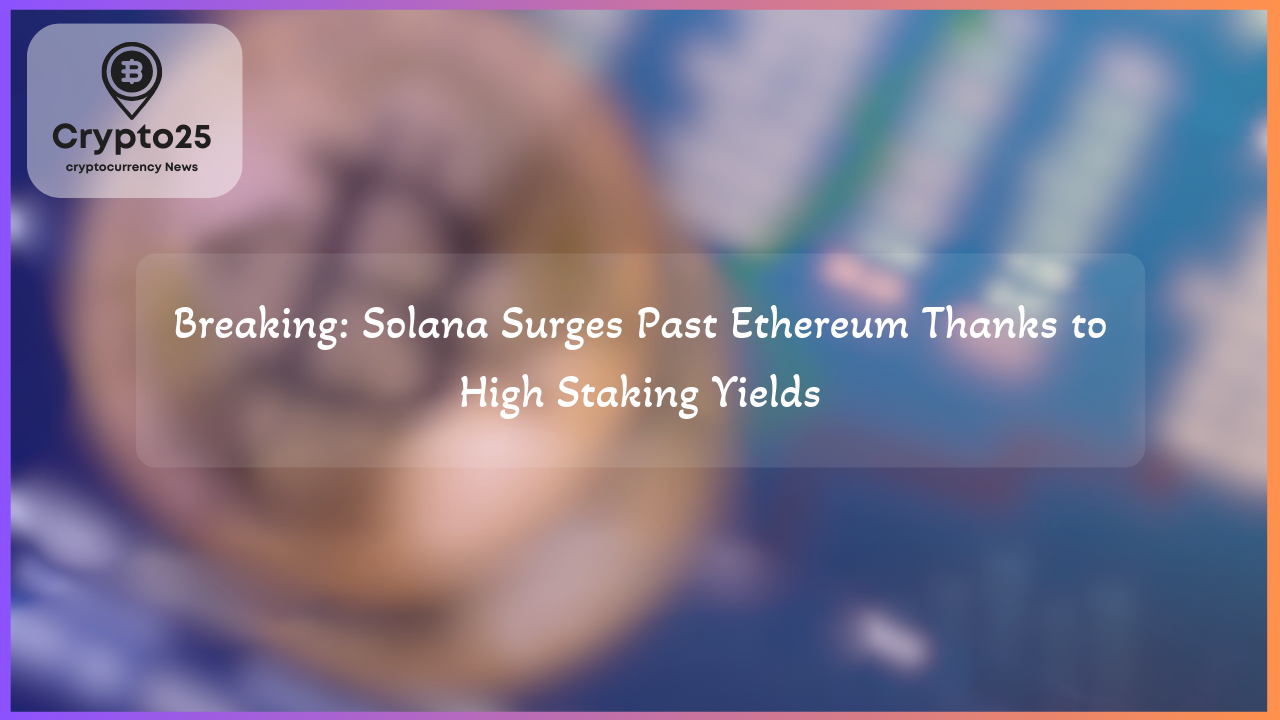
The competition between Ethereum and Solana in the blockchain ecosystem has been a key talking point for years. Recently, Solana reached a pivotal moment when it briefly overtook Ethereum in total staked dollar value. This rare milestone has reignited discussions regarding the strengths, trade-offs, and implications of staking on these two leading blockchain networks, offering critical insights for the global crypto community.
## Solana vs Ethereum: Staking Market Trends
On April 20, Solana’s staked dollar value peaked at $53.9 billion, narrowly surpassing Ethereum’s $53.7 billion. While Ethereum quickly regained its top position by increasing to a staked total of $56 billion against Solana’s $54 billion, this momentary flip underscored important considerations about staking trends. For Solana, the rise was fueled by its higher staking yield. Offering an impressive return of 8.31% compared to Ethereum’s 2.98%, Solana’s network appeals to users who prioritize passive earnings from locked tokens.
However, Ethereum’s staking ecosystem stands apart due to its diversified utility. With approximately 28% of ETH tokens staked, much of its supply is actively engaged in DeFi protocols, liquidity pools, and other mechanisms that provide higher potential returns than staking. This dual functionality makes Ethereum a robust ecosystem for both stakers and DeFi enthusiasts.
## Rewards, Participation, and Security in Ethereum vs Solana Staking
The staking participation rate also highlights contrasting approaches within the two ecosystems. With Solana recording a staking ratio of 65%, the network demonstrates strong community involvement and user confidence. But some experts argue that Solana’s staking structure prioritizes accessibility at the expense of economic security. Unlike Ethereum, Solana does not implement advanced slashing mechanisms, which punish validators for malicious behavior or mismanagement. Critics, like Ethereum researcher Dankrad Feist, have pointed out that without meaningful penalties, Solana’s staking system lacks true incentives to ensure validator performance and network security.
Ethereum, on the other hand, applies a balanced economic model. The platform emphasizes resilience, allocating penalties for poor validator performance, which maintains the integrity of the network. While its staking return may seem less competitive, this model ensures higher security, aligning with Ethereum’s broader goal of building a sustainable, long-term blockchain future. Users are also incentivized to participate in various DeFi options, highlighting a dynamic engagement between staking and other financial opportunities in Ethereum’s ecosystem.
| Title | Details |
|---|---|
| Total Staked Value (ETH) | $56 Billion |
| Total Staked Value (SOL) | $54 Billion |
| Staking Return (ETH) | 2.98% |
| Staking Return (SOL) | 8.31% |
## Future Implications of a Competitive Staking Landscape
The temporary reshuffle in staked value underscores the dynamic nature of blockchain technology. While Ethereum solidifies its role as the go-to platform for decentralized finance with prolonged network stability and a transparent validator oversight system, Solana makes a strong case for user-friendly, high-yield staking participation. Each platform serves different priorities, such as Ethereum’s focus on security and DeFi innovation balanced against Solana’s goal of broad adoption through simplified staking mechanisms.
Nevertheless, the debate on staking efficiency highlights the challenges of catering to both casual and institutional participants in the crypto space. Whether high staking yields can sustain network growth without compromising security remains an open question. Similarly, Ethereum must ensure its more complex model continues to attract stakers while maintaining its leading position in the DeFi sector.
As the competition between these blockchain giants evolves, crypto users and investors must stay informed to navigate opportunities and risks. The Solana vs Ethereum staking rivalry not only fuels innovation but also shapes the future trajectory of Web3 technologies, making developments in this space a key focus for the global crypto ecosystem.
